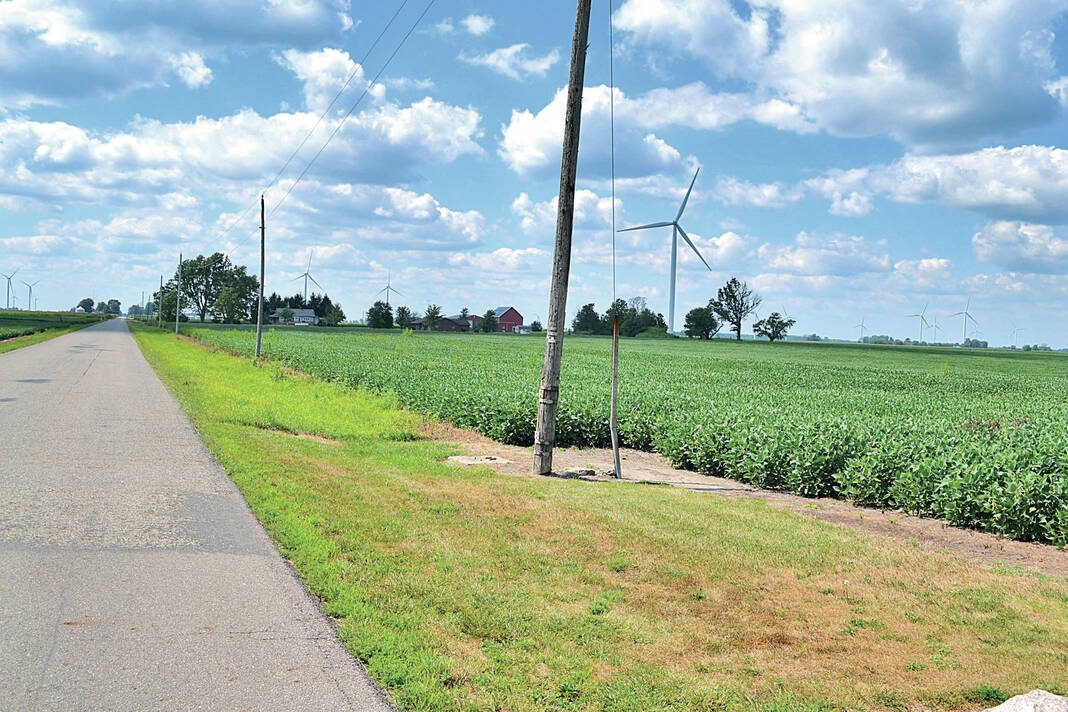

Broomcorn Row.
Submitted
By Stephen Jackson | For The Times-Post
The town of Leisure in Duck Creek County was named after Nathan J. Leisure and his family, who were prominent in the area.
But the town’s claim to fame was achieved around 1900 with a unique set of three properties starting at the main intersection of the town, State Road 13 and County Road 1800 North, and proceeding westward for a distance of one mile.
That one-mile strip on the north side of CR 1800N was known as Broomcorn Row.
The presence of an unusual agricultural crop made Leisure the center of a flourishing broom-making industry.
In the heyday of home industry-type broom making, Leisure had five broom makers.
In addition to the three properties west of town, south of town was a forth and over a mile southeast of Leisure was the fifth.
The three west of town in the order of their businesses were: Henry Ward Beecher Young, H. M. Wisler and J.J. McIntosh.
South of Leisure was the broom shop of Theodore Wardwell, and nearby Dave Tranbarger rounded out the five.
But why Leisure?
The answer stems from a unique soil condition that existed on a 10-acre farm of Henry Ward Beecher Young.
The residents who lived there around 1880 theorized that this particular area may once have been a small lake bed, since the soil is different from that of the surrounding area and once contained myriads of small shells reminiscent of the trilobites that are common in older rocks found in southeastern Indiana.
Making the soil even more unique was the fact that there was no need for crop rotation.
After years of broomcorn harvests there seemed to be no drain of the nutritive elements in the soil where the cane flourished.
It produced a remarkable crop of cane that was a distant cousin to the more familiar sorghum cane.
The stalks were between 8 and 10 feet at maturity.
The part harvested for broom making is near the top where the stalk gives way to an upright bundle of long, straight bristles, interspersed with small clusters of seeds.
The cane was planted just after the corn crop was put out, and was harvested just before the first frost in the fall.
Once harvested, the clusters of bristles would be taken to a building nearby called a “sticking shed,” where the bundles would be hung up for a week to 10 days to air dry.
The annual yield was sufficient to maintain broom making around Leisure for about six months out of the year.
When the local supply was exhausted and more was needed it could be supplied from similar nutritive-rich fields near Arcola, Illinois.
It was estimated that 20,000 brooms were produced annually for around 30 years before it died out around 1910 with the advent of more modern broom-making techniques.
Broomcorn (Sorghum vulgare var. technicum) is a type of sorghum that is used for making brooms and whiskbrooms.
It differs from other sorghums in that it produces heads with fibrous seed branches that may be as much as 36 inches long.
Although the origin of broomcorn is obscure, sorghum apparently originated in central Africa.
Production of this crop then spread to the Mediterranean, where people used long-branched sorghum panicles for making brooms in the Dark Ages.
Benjamin Franklin is credited with introducing broomcorn to the United States in the early 1700s.
A ton of broomcorn brush makes 80 to 100 dozen brooms.
Broomcorn is a coarse annual grass that grows 6 to 15 feet tall.
Broomcorn is usually planted between May 1 and June 15.
Normal broomcorn yields range from 300 to 600 pounds per acre, or enough to make 150 to 350 brooms/acre.
Domestic broomcorn acreage is low because of the limited demand for the crop and its vast labor requirements, particularly for harvesting.
Stephen Jackson is Madison County Historian.